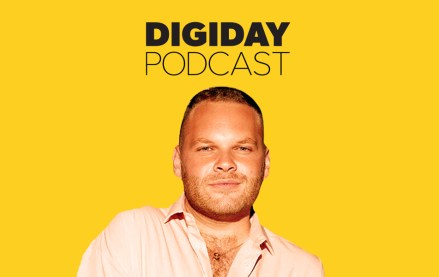Connect with execs from The New York Times, TIME, Dotdash Meredith and many more
How the header bidding gold rush predicts the future of programmatic exchanges

by Jason Fairchild, CRO & Co-Founder OpenX
As the first decade of programmatic comes to a close the industry is looking ahead to what’s next. The commoditization concept of independent exchanges continues to short-change publishers and buyers. In fact, minor differences have a major effect on exchange performance, materially impacting participants’ bottom line.
One fundamental axiom of a healthy marketplace is: maximum liquidity (monetization) is achieved as a result of maximum competition. Maximum competition in any marketplace can only be attained in an open environment without technical, business or structural barriers that limit participation.
The gold-rush to header bidding, a new technology that offers openness and direct competition in a previously closed, iron curtain technology paradigm, highlights just how intensely the market wants the benefits of open exchanges.
But what makes one exchange different from another? What makes one exchange better at delivering higher yield for sellers (publishers) and more effective ROI for buyers? How will the existence of open exchanges play out, and will Google come to dominate this area of ad tech via their new exchange based bidding?
In order to answer those questions and provide a path to deeper understanding of the overall exchange space, publishers and advertisers must understand the four fundamental elements of programmatic exchanges: technology, scale, quality, and client alignment. Each one is key to maximizing monetization for publishers and attracting premium buyers.
Technology. Build A Better Mousetrap. Then do it again.
The better mousetrap always wins. And the best technology companies are the ones who will build the better mousetrap.
A great example: Google actually entered the paid search market late, behind GoTo.com, which pioneered the pay-for-placement model. However, the deep bench of technologists at Google improved cost-per-click payment with relevance, speed, and client controls that generated consistently higher yield for publishers. Within 18 months Google dominated the paid search market and permanently advanced online marketplace models beyond automated bid/ask algorithms.
Marketplace models prioritizing automation over innovation will fall further behind in the value they provide. Programmatic technology requires an ever-increasing level of technological sophistication to innovate, deploy, and support new monetization solutions. Look to work with the company who has the deepest bench of experienced technologists.
Scale. Size Matters, but it’s not everything.
Advertisers have relatively simple needs, they want access to their target audience in brand safe environments and at scale. Scale in programmatic means a massive enough marketplace to meet the buyer’s need for global reach and differentiated inventory. It’s the single most powerful argument against the fear of walled gardens taking all of the oxygen. Simply put: no single walled garden could ever provide enough inventory scale and variety to satisfy the needs of programmatic buyers.
Quality. Without quality controls, a marketplace withers.
Quality generates far more value than positive PR. It is an essential gold-star component for attracting the trust and increased marketing dollars from premium brands worldwide.
Scale without quality is simply crap at scale, and a marketplace model following that path will quickly wither. An economic explanation for that well known phenomenon (also known as ‘The Lemon Theory’) can be read in a white paper by Stanford Economist Dr. Paul Milgrom.
A more familiar way to think about this theory: Where do you think you’ll secure a higher price for your goods? Nordstrom or the local flea market? And if you’re the buyer, where will you have more confidence that the price you pay accurately reflects the item’s value?
Alignment. You can’t compete with your core customer.
This is the final fundamental for a reason: it is how an exchange best aligns and applies their technology, scale, and quality fundamentals to most effectively maximize value for their clients. It means that for publishers, the exchange provider is your monetization partner, constantly aware of your goals, and applying their analysis to your business and overall marketplace dynamics to give you the best agnostic advice on how to maximize your yield.
Furthermore, most exchanges today split their focus and energies between buyers and sellers. Inherent issues abound, the biggest one is the sheer impossibility of assuring clients’ best interests are represented when the exchange itself is conflicted by being both a trading/exchange platform and a principle trader in the exchange (thus getting paid by both sides). When you add lack of transparency into what exactly is happening in these scenarios (who gets paid what % of revenue) to this mix, bad things tend to happen for publishers.
What else can we learn from the header bidding gold rush and its current stymied state? That header bidding use will rationalize and consolidate around the highest quality, largest scale, most experienced exchange operators with header bidding products, rather than stand alone header bidding marketplaces or vendors.
Again, advertisers want the ability to reach their target audience, at scale, in brand safe environments. They will pay a premium for this combination, which only exists in a few open exchanges around which the industry is already starting to consolidate. As publishers and app developers evaluate exchanges based on their strength in the fundamentals then filter for alignment, they will be left with only a few options from which to choose the best programmatic exchange partner.
More from Digiday

In Graphic Detail: Inside the state of the creator economy industrial complex
The creator economy might have started out as an alternative to traditional media, but is becoming more and more like it as it professionalizes.

Ad Tech Briefing: How ad tech underpins the fate of Madison Avenue’s ‘Wedding of the Year’
The ‘brand safety’ debate is threatening to derail the IPG-Omnicom merger, while questions are raised on the integration of Annalect and Acxiom.

‘Embrace your chaos’: How creator Brandon Edelman is trying to plan for the future
While creators are now key to marketing budgets, their longevity in the fast-paced digital world is a pressing concern. This episode explores how TikToker Brandon Edelman is navigating that challenge, building a sustainable career by diversifying his content and focusing on brand partnerships.





